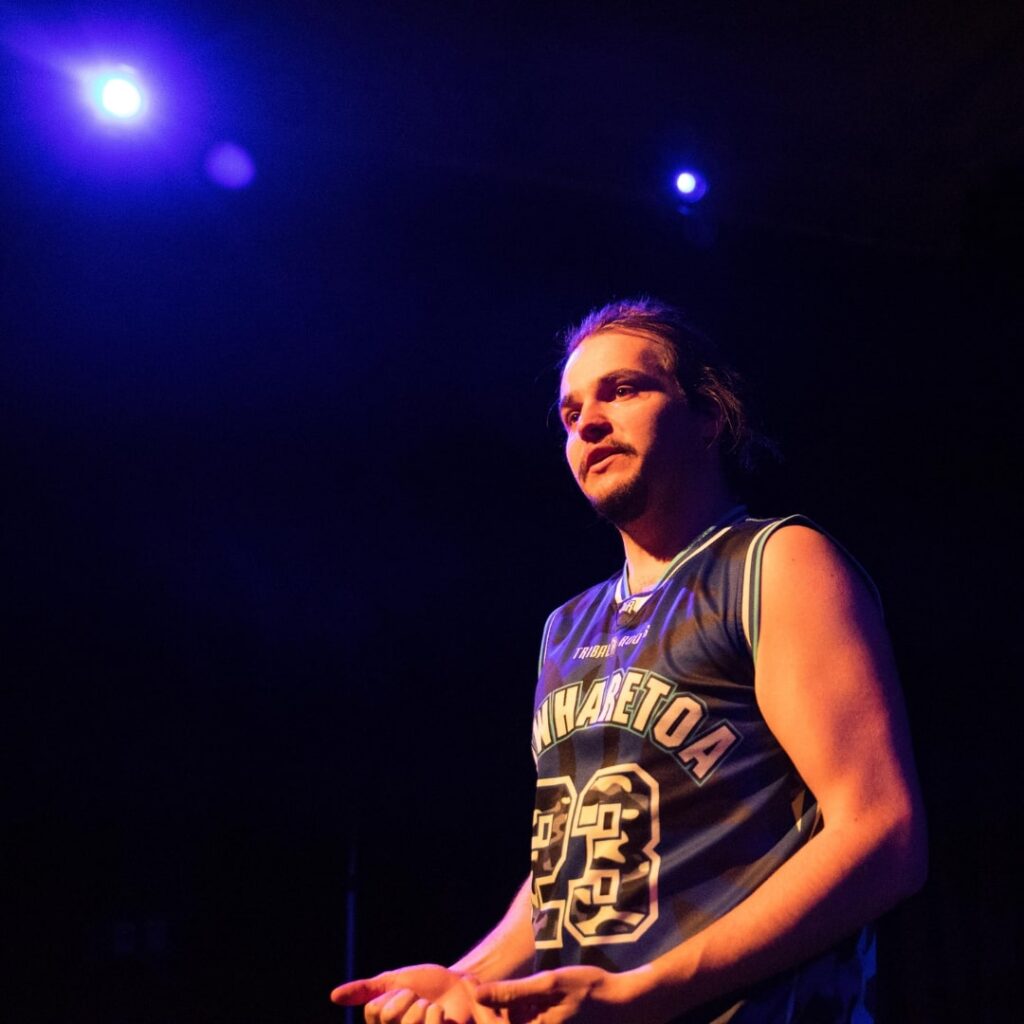Slowing The Sun
BATS Theatre, The Dome, 1 Kent Tce, Wellington
14/06/2023 - 17/06/2023
Production Details
Kaituhi / Playwright: Isaac Martyn
Isaac Martyn
A story of modern indigenous times in tandem with the pūrākau “Māui me te Rā”.
A whānau in a town just outside of a coastal city is burdened by insurmountable challenges: a racist system, colonised minds, a tumultuous climate, lingering grief, and worst of all – the stubbornly unchanging nature of each member of the whānau. For the tamariki o te whānau, Putu, the answers for how you can achieve the impossible lie in the story of Māui slowing the sun.
How can something that has always existed be changed?And what do you do when the people who are supposed to be your pou, are tearing you down?
BATS Theatre (Dome)
Wed 14th – Sat 17th June, 2023
6pm
PRICES: $15 – $22
BOOKING DETAILS: To book tickets please visit https://bats.co.nz/whats-on/slowing-the-sun/
Performer: Isaac Martyn
Theatre , Solo ,
60 mins
Demonstrates two perspectives of the concept of kotahitanga and how this momo mātāpono is perceived and practiced
Review by Nitika Erueti-Satish 15th Jun 2023
Entering the Dome I am greeted with the warm tones of ‘Tamanui-te-Rā’ and soothing sounds transforming my current world into the realm of our Atua and tīpuna. How the set is staged is inviting and I am intrigued and very interested right from the get-go. I get to see the cast upon entry and instantly I am in a wondering state. Excited, I take my seat and breath.
We begin by celebrating the birthday milestone of Putu, the pōtiki of his whānau, who is preparing to enter secondary school. Raised by his mother Sally and his Pāpā, grandfather, in a small rural town their simple world is disrupted by the return of Ana, Sally’s opinionated older sister who moved away to the big city five years ago. By pointing out everything that is wrong with the lifestyle of her whānau, Ana uses her big city ideas as a vehicle to address her mamae from a past trauma that she can’t deal with on her own. By opening old wounds, she creates a space of wānanga beginning in the realm of Tu and ending in the realm of Rongo, allowing her whānau to reunite and heal together.
Throughout the show I battle with this rangirua feeling. Something was missing at the beginning that disconnected the start to the ending. I feel like more is needed in the introduction to the story to then sew all the scenes together.
The translation between both the present narrative and the pūrakau of Māui slowing down the sun demonstrates two perspectives of the concept of kotahitanga and how this momo mātāpono is perceived and practiced. The application of this concept works well in both realms but also feels contradicting in adhering to the deep understanding in the many layers of what whakakotahitanga means in a philosophical and practical sense.
For a development piece you can see where and how this show can evolve and where it can go. I feel that Pāpā and Ana hit the mark in terms of expression, tone, movement, body language. Their performance holds up the credibility and integrity of the narrative for as much as it is allowed in a 45min piece.
Now let’s talk about the costume, set and design. I love this so much! Without giving too much away, the lighting transforms each transition so well and the use of the props is very clever and enhances each scene. The use of the space is also very well executed and gives space for each scene to be individualised. Costume is simple and works well as a blank canvas. But honestly, the set design got me as soon as I walked in.
The use of Te Ao Māori and Te Reo Māori is, well, interesting to me. Poho kererū ana ahau ki te rongo ki tōku arero ki rō tēnei whakaari ki ngā wāhanga o te pūrakau a Māui. Ko te reo anake ki ēnei wāhanga he reka! Ēngari, ki au nei ka whati tikanga o te mahi raranga ki rō te whakaari nei kia whakawairuatia te māramatanga a ngā mahinga ki ngā whatumanawa ō ngā kaiwhakaari. I think some wānanga regarding mātauranga māori and some depth of tikanga māori in terms of how this is represented through these mediums would make massive shifts in the elevation of this piece. I feel way more connected to the show during the te reo scenes because it is very familiar to me, because that is the story of my tīpuna.
I look forward to watching this show grow and continue to evolve. Well done to all the production crew and everyone who was a part of the kapa who made it possible to be seen. A show worthy of an entry into the Kia Mau Festival 2023.
Copyright © in the review belongs to the reviewer





Comments